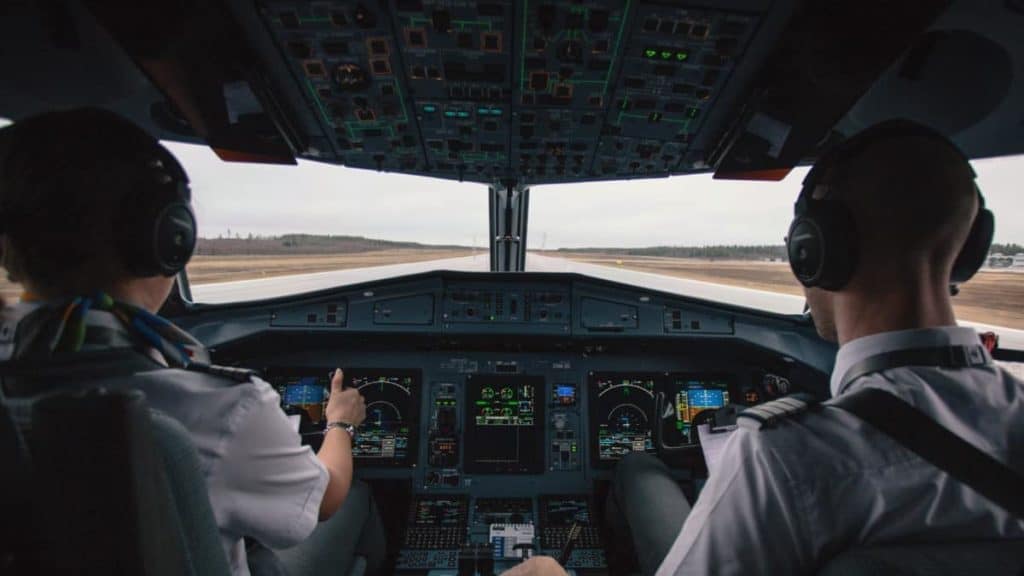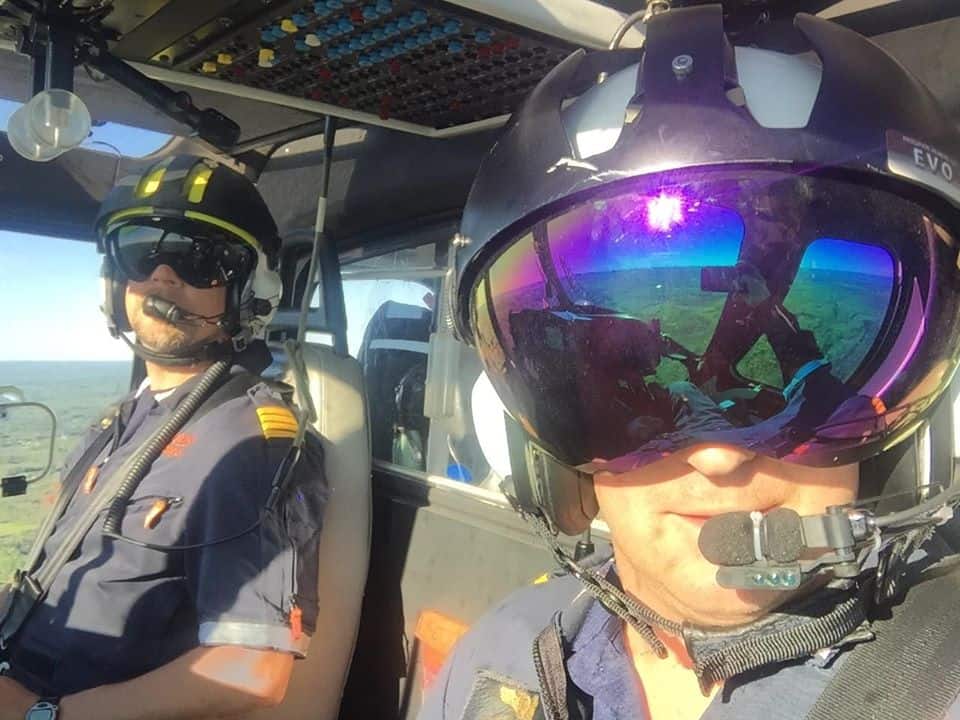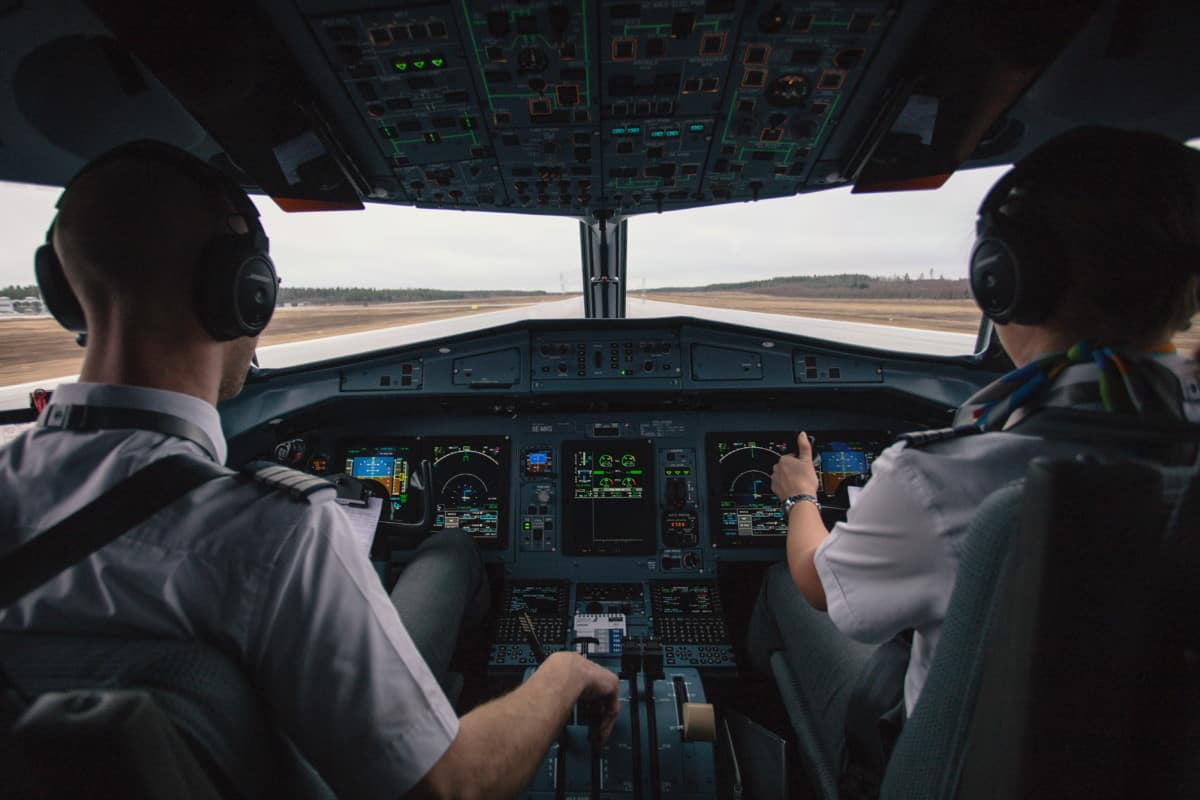
When you travel on a plane, you may hear pilots, copilots, and crew members chatting and laughing amongst themselves, as long-time friends typically do. Pilots and copilots may seem like they know each other and travel together frequently. However, pilots and crew members are often recently acquainted.
Pilots don’t always fly with the same copilot, also known as a first officer. Pilots will often fly with the same copilot within one trip to and from a location. However, pilots typically fly with different copilots and crew members for each new trip.
In this article, I’ll explain the two primary pilot and copilot assignment systems. I’ll also discuss how differences between larger and smaller airline companies create a lower or higher probability of repeated pilot and copilot pairing. Finally, I’ll identify reasons why the rotation of pilots and their crews can be beneficial.
What are Pilot Scheduling Systems?
There are two central scheduling systems for pilots and copilots that airlines use:
- Line bidding
- Preferential bidding
These systems allow pilots to request particular trips based on their individual needs and preferences.
Different airlines will use one of these systems based on the particularities of the airline. Pilots choose their schedules and trips based on their trip length, layover preference, flight distance, and personal needs.
Line Bidding
In the line bidding system, airlines create a specific schedule with a series of flights, referred to as lines. The flights on a line often have similar characteristics in terms of flight distance, the number of days in the round-trip flight, and layover locations.
The airlines create lines that vary in trip length, typically anywhere between one to four days. The airline makes the lines and schedules for the entirety of the month. Then, the pilots can choose the line or the flights they prefer. This means the pilots will choose their schedule for the whole month.
Pilots are assigned their desired lines based on seniority with the more senior pilots receiving higher priority. This means that first officers or copilots are unlikely to receive their first preferences since they don’t have seniority. Considering the personal needs, senior priority, and airline scheduling of pilots and copilots, it’s rare that pilots and copilots would fly together frequently with this type of scheduling system.

Join My Newsletter & Get Great Tips, Information and Experiences To Help You Become a Superb Pilot!
Preferential Bidding
In a preferential bidding system, there’s no posted schedule from which pilots and crew can choose. Instead, pilots submit their individual preferences for flights. For example, pilots may request a layover in a particular city, only have one-day trips, or fly a specific route. The airline then takes these preferences and matches them according to the flight schedule.
The matching is also done based on the seniority of pilots. With this system, pilots and copilots rarely coincide on flights more than once since their levels of seniority are so different. Copilots are often placed into undesirable flights in a preferential bidding system because of their low seniority. The preferential bidding system also creates minimal concurrence between pilots and the same copilot.
Can Pilots Request a Particular Copilot?
Based on these two scheduling systems for pilots, this may lead you to wonder if, although it’s rare for pilots to be randomly paired with the same copilot, can they request a particular copilot.
It’s very uncommon for pilots to request a specific copilot and have their requests granted. It can usually only happen if two senior pilots put in what’s referred to as a “buddy bid.” This can only happen in a preferential bidding system when two senior pilots bid to fly together.
So while two senior pilots might be allowed to fly together, it’s still rare because airlines have their own needs and may be forced to put senior pilots on different flights due to experience requirements.
Do Pilots Ever Fly With the Same Copilot?
While it’s rare that pilots fly with the same copilot, it’s not impossible. Pilots and copilots flying together more than once may happen in smaller airline companies. Smaller airlines with fewer than 5,000 employees will have a higher probability of repeated matches in pilot and copilot schedules.
With fewer pilots and copilots to choose from, pilots are more likely to be matched with the same copilot occasionally. Some pilots may consider this an advantage of working for a smaller airline. On the contrary, at larger airlines, with up to 97,000 employees, pilots would be unlikely to fly with the same copilot more than once.

Advantages of Flying With Different Crews
While you may think it would be preferable for pilots to always fly with the same copilot and crew, there are also many advantages to flying with a different crew. For the copilots and crew, it allows them to gain experience flying with various pilots and work with a variety of people. While all pilots go through the same training program, there is still much to be learned from senior pilots.
It can be an opportunity for pilots to mentor copilots and discuss their futures in the industry. Based on my own personal experience, flying with different pilots gives an excellent opportunity to learn from each other and prevent bad habits from forming.
One of the biggest downsides to working with varying pilots is the constant learning of the other pilots’ personalities. Some pilots are very easy to get on with, while others can be a complete nightmare! At least the trips are usually only a few days if the pairing is a miserable one!
Finally, just as with any other job, working with a variety of people can be beneficial for company unity. In the case of airlines, pilots and crew may feel more unified and loyal to the company as they connect with more people.
Final Thoughts
In conclusion, a pilot will rarely fly with the same copilot on separate trips. Due to the line bidding and preferential bidding systems, which give senior pilots priority and leave lower-ranking pilots to fill in less desirable flights, it’s unlikely that a pilot and copilot will fly together often.
Additionally, the vast quantity of employees that most airlines have makes the probability of pilots and copilots flying together repeatedly relatively rare. However, this is usually not a problem for anyone. Pilots flying with different copilots and crew can be beneficial for their professional growth and airline unity.
Learn More…
Try These Articles:
* Can Pilots Go To The Bathroom?
* Aircraft & Pilot Call Signs: What Are They Really For?


